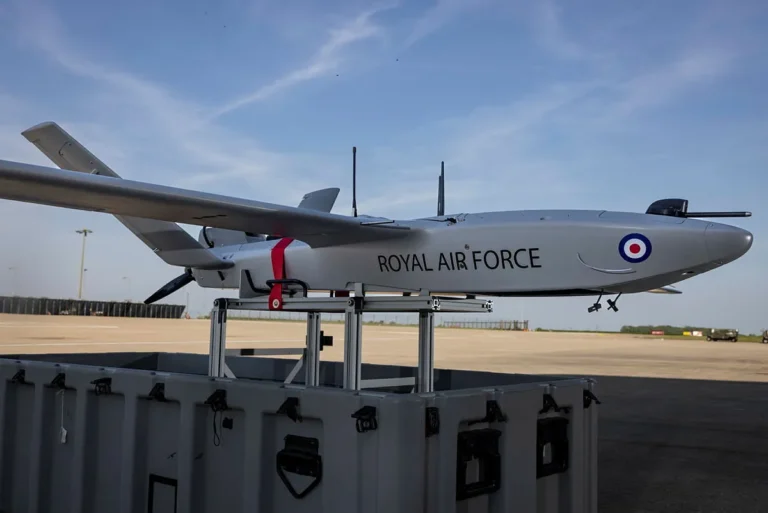Follow Us:

Share
How far will North Korea go in its quest for military dominance? With its latest missile test, Pyongyang has sent a clear message to the world—its military ambitions are far from over.
North Korea’s missile capabilities have once again captured global attention following its latest test launch of the Hwasong-12, a powerful intermediate-range ballistic missile often referred to as the “Guam Killer.”
This latest Hwasong-12 test is particularly significant due to advancements in re-entry technology, a critical factor in ensuring the effectiveness of long-range ballistic missiles.
With a range capable of reaching U.S. military bases in Guam, the Hwasong-12 poses a growing strategic threat, further escalating tensions in the Indo-Pacific region. Despite international pressure and sanctions, North Korea remains committed to advancing its missile technology.
On January 30, North Korea conducted its first Hwasong-12 missile test since 2017, marking the country’s seventh missile test of 2022. The missile was launched on an extreme trajectory, reaching an altitude of approximately 2,000 kilometers (1,243 miles)—well beyond the Armstrong Limit (18 km), which defines the boundary between Earth’s atmosphere and space.

During its flight, cameras installed on the missile captured images of Earth, providing rare visuals from a North Korean missile test before it descended and struck a target 800 kilometers (497 miles) from its launch point in Jagang Province.
North Korea’s state-run Korean Central News Agency (KCNA) stated that the test was conducted to “selectively evaluate the missile being produced and deployed and to verify the overall accuracy of the weapon system.” The launch reportedly confirmed the missile’s accuracy, security, and operational effectiveness.
The Hwasong-12 is estimated to have a range of 4,500 kilometers (2,800 miles), making it capable of striking U.S. military bases on Guam, a critical hub for American power projection in the Pacific. Its range also places other regional targets, including parts of Japan and the Philippines, within striking distance.
North Korea’s missile advancements reflect its broader strategy to enhance military capabilities and deter perceived threats from the United States and its allies.
The latest missile test comes amid increasing regional tensions, as North Korea has conducted multiple missile launches in a short period. These actions have alarmed neighboring countries such as South Korea and Japan, prompting calls for heightened security measures and renewed diplomatic engagement.

The United States, in response, has urged North Korea to return to negotiations, emphasizing the need for diplomatic solutions to reduce hostilities.
In reaction to these growing threats, the U.S. military has been actively reconfiguring its presence in the Indo-Pacific. Recognizing Guam’s increasing vulnerability to missile attacks from both North Korea and China, the Pentagon has begun spreading its military assets across multiple locations.
Read also: How Strong is the North Korean Military
This includes expanding bases on Wake Island and Tinian Island, as well as training for ‘Austere Airfield’ operations in Guam—an initiative aimed at maintaining air combat capabilities even in the event of runway damage. The U.S. also plans to station bombers further away in Australia for added security.
While North Korea has never fully abandoned its missile program, there have been periods of reduced testing, often due to diplomatic engagements or internal challenges. Notably:

The recent Hwasong-12 test on January 30, 2022, marked a renewed focus on missile advancements, demonstrating both extended-range capabilities and potential improvements in re-entry technology.
For long-range ballistic missiles to be fully operational, they must be able to re-enter Earth’s atmosphere intact and accurately strike their targets.
This requires advanced heat shielding and structural integrity, as the warhead must withstand extreme temperatures exceeding 5,000 degrees Fahrenheit (2,760 degrees Celsius) during descent.
The success of re-entry technology determines whether a missile can effectively deliver a nuclear or conventional warhead, making it a crucial component of any intercontinental strike capability.
North Korea has conducted multiple tests to improve its missile re-entry capabilities, with significant developments seen in various missile models.
The Hwasong-12, an intermediate-range ballistic missile (IRBM), has undergone several successful tests, with steep trajectories designed to simulate re-entry conditions.
The latest test demonstrated a controlled descent and impact, suggesting progress in thermal shielding and aerodynamic stability.
In addition to the Hwasong-12, North Korea has tested intercontinental ballistic missiles (ICBMs) such as the Hwasong-15 and Hwasong-17, which are designed to deliver nuclear warheads across continents.
The March 2023 test of the Hwasong-17 indicated potential improvements in re-entry vehicle (RV) technology. However, independent experts continue to debate whether North Korea has fully mastered warhead survivability and precision targeting, key aspects needed for an effective deterrent.
Furthermore, North Korea’s hypersonic missile development suggests an effort to create maneuverable warheads that can evade missile defenses.
The Hwasong-8, a hypersonic glide vehicle (HGV), represents a shift towards advanced aerodynamic designs and heat-resistant materials. Successfully developing this technology would provide North Korea with an even more unpredictable and difficult-to-intercept missile system.
North Korea is expected to continue enhancing its intermediate-range missile capabilities, potentially developing missiles with multiple warheads to increase their destructive capacity.
The regime has also demonstrated its commitment to missile advancement through recent tests of the Pukkuksong-5 submarine-launched ballistic missile (SLBM) and the Hwasong-8 hypersonic missile. These developments indicate a continued investment in advanced weaponry, further complicating security dynamics in the region.
Share
Defense Feeds is publication focusing on informing, engaging, and empowering the world by providing accurate information from defense technology.
Powered by Defense Feeds © 2025 – All rights reserved.